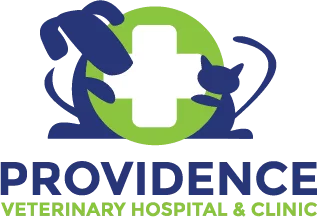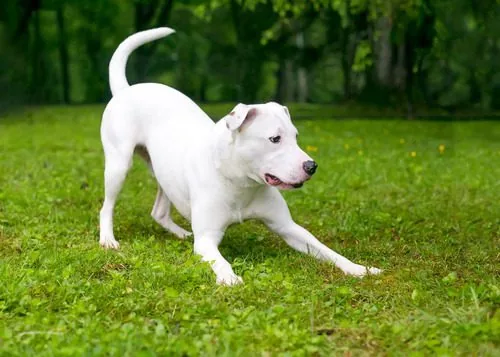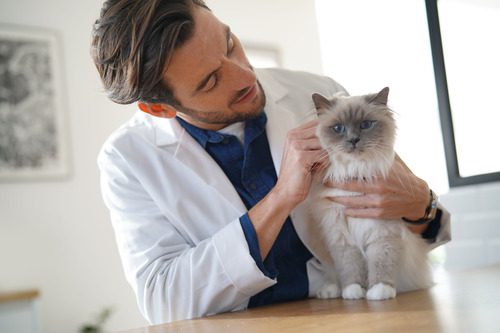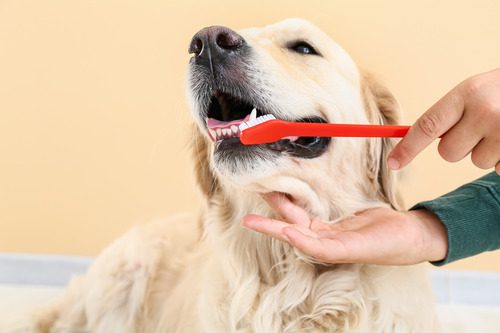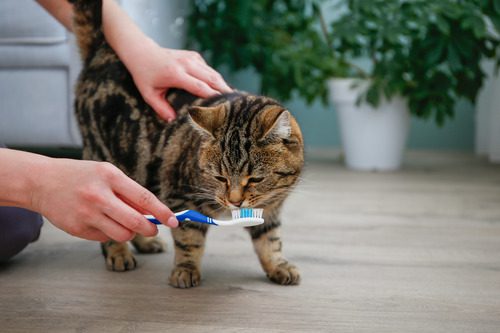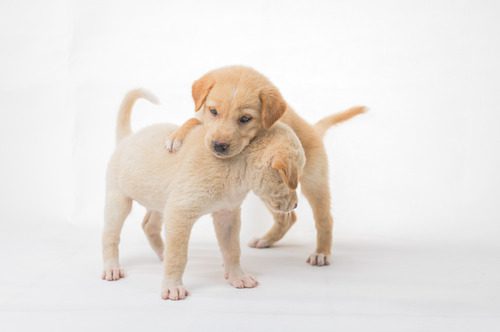Flowers & Houseplants Toxic to Dogs & Cats: Flowers to Keep Away From Your Pet
Having a beautiful home filled with flowers and houseplants can be delightful, but some of these plants can be dangerous to your pets. Understanding which flowers and houseplants are toxic to dogs and cats is essential for their safety. In this blog, we’ll explore various toxic plants and offer guidance on creating a pet-safe environment. For more information or if you suspect your pet has ingested a toxic plant, call Providence Veterinary Hospital and Clinic at (510) 521-6608 or (510) 521-5775.
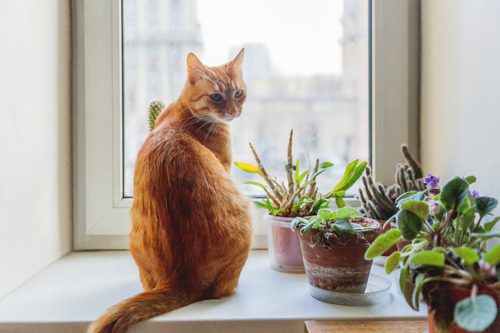
Common Toxic Flowers
Certain flowers, while lovely to look at, can pose serious risks to your pets. Here are some common toxic flowers that you should avoid:
Lilies
Lilies are particularly toxic to cats, and even small amounts can cause severe kidney failure. All parts of the lily plant, including the pollen and water in the vase, are harmful. If you have cats, it is best to avoid having lilies in your home altogether.
Tulips
Tulips contain toxic compounds called tulipalin A and B, which can cause significant digestive upset in both dogs and cats. Symptoms of tulip poisoning include vomiting, diarrhea, and drooling. The highest concentration of these toxins is found in the bulbs.
Daffodils
Daffodils, or narcissus, contain lycorine, an alkaloid with strong emetic properties, meaning it triggers vomiting. Ingesting daffodils can also cause abdominal pain, cardiac arrhythmias, and convulsions in pets. As with tulips, the bulbs are the most toxic part.
Azaleas
Azaleas belong to the Rhododendron family, which contains grayanotoxins. These toxins can disrupt the normal functioning of the heart and skeletal muscles in pets. Symptoms of azalea poisoning include vomiting, diarrhea, weakness, and in severe cases, coma or death.
Oleander
Oleander is extremely toxic to both dogs and cats. It contains cardiac glycosides, which can cause severe heart irregularities, vomiting, and even death. Every part of the oleander plant is toxic, including the leaves, flowers, and stems.
Common Toxic Houseplants
Many common houseplants can also be harmful to pets. Here are some you should be cautious about:
Philodendron
Philodendrons are popular houseplants, but they contain insoluble calcium oxalates, which can cause oral irritation, swelling, and difficulty swallowing in pets. In severe cases, ingestion can lead to respiratory distress.
Pothos
Pothos, or devil’s ivy, is another common houseplant that contains insoluble calcium oxalates. Ingesting pothos can cause oral pain, drooling, vomiting, and difficulty swallowing. Pets should be kept away from these plants.
Dieffenbachia
Also known as dumb cane, Dieffenbachia contains toxic sap that can cause burning and swelling of the mouth and tongue in pets. Severe cases can result in difficulty breathing and swallowing. This plant should be kept out of reach of pets.
Sago Palm
Sago palms contain cycasin, a toxin that can cause liver damage, vomiting, diarrhea, and even death in pets. All parts of the plant are toxic, but the seeds are particularly dangerous. Immediate veterinary attention is required if ingestion is suspected.
Jade Plant
Jade plants, also known as Crassula ovata, can cause vomiting, depression, and incoordination in pets. These succulents should be kept out of reach of dogs and cats to prevent accidental ingestion.
Symptoms of Plant Poisoning in Pets
Recognizing the symptoms of plant poisoning in pets can help you act quickly and seek veterinary care. Common symptoms include:
Gastrointestinal Symptoms
- Vomiting
- Diarrhea
- Drooling
- Loss of appetite
Neurological Symptoms
- Weakness
- Tremors
- Seizures
- Incoordination
Cardiovascular Symptoms
- Irregular heartbeats
- Low blood pressure
- Collapse
Respiratory Symptoms
- Difficulty breathing
- Swelling of the mouth and throat
If you notice any of these symptoms and suspect your pet has ingested a toxic plant, contact Providence Veterinary Hospital and Clinic immediately at (510) 521-6608 or (510) 521-5775.
Creating a Pet-Safe Environment
To keep your pets safe, it’s important to create an environment free of toxic plants. Here are some tips:
Choose Pet-Safe Plants
Opt for non-toxic plants such as spider plants, Boston ferns, and African violets. These plants are safe for pets and can still beautify your home.
Place Plants Out of Reach
Keep plants on high shelves or in hanging planters to prevent pets from reaching them. Ensure that fallen leaves or flowers are promptly cleaned up.
Educate Family and Visitors
Ensure everyone in your household, including visitors, is aware of the toxic plants and the importance of keeping them away from pets.
Regular Veterinary Check-Ups
Regular check-ups can help catch any signs of poisoning early. Your vet can also provide advice on pet-safe plants and preventive measures.
For additional information or concerns about plant toxicity, contact Providence Veterinary Hospital and Clinic at (510) 521-6608 or (510) 521-5775.
Ensuring Your Home is Safe for Pets
While having a home filled with beautiful flowers and houseplants is lovely, it’s essential to be aware of which plants are toxic to dogs and cats. Creating a safe home for your pets involves being mindful of the plants you bring into your home. Understanding which flowers and houseplants are toxic to dogs and cats can help you make informed decisions and protect your pets from potential harm. Always prioritize their safety by choosing non-toxic plants and consulting your veterinarian if you have any concerns. If you suspect your pet has ingested a toxic plant, seek veterinary care immediately by calling Providence Veterinary Hospital and Clinic at (510) 521-6608 or (510) 521-5775.
Recent Posts
What Does Your Dog’s Tail Wag Really Mean?
What Does Your Dog’s Tail Wag Really Mean? Dogs use their tails for much more than just…
Feline Leukemia: Prevention and Detection
Feline Leukemia: Prevention and Detection Cat Feline Leukemia is a serious viral disease that affects felines worldwide….
A Team Effort: How Home Care and Professional Cleanings Keep Your Dog’s Teeth Healthy
A Team Effort: How Home Care and Professional Cleanings Keep Your Dog’s Teeth Healthy Dental health is…
The Perfect Pair: Home Care and Professional Cleanings for Your Cat’s Teeth
The Perfect Pair: Home Care and Professional Cleanings for Your Cat’s Teeth Caring for your cat’s teeth…
What is Bordetella and Why Should You Care?
What is Bordetella and Why Should You Care? Bordetella is a term many pet owners hear when…
Providence Veterinary Hospital & Clinic serve Alameda, CA as well as Oakland, San Leandro, and the surrounding areas with superb veterinary medicine and gentle, compassionate care. We’ve been a part of this community since 1947 when a veterinarian started seeing pets in his home after the end of World War II. He built an animal hospital right under his house, and that’s where we remain to this day (with modern remodeling in 2016, to outfit the hospital with the latest medical technology and equipment, of course!).
